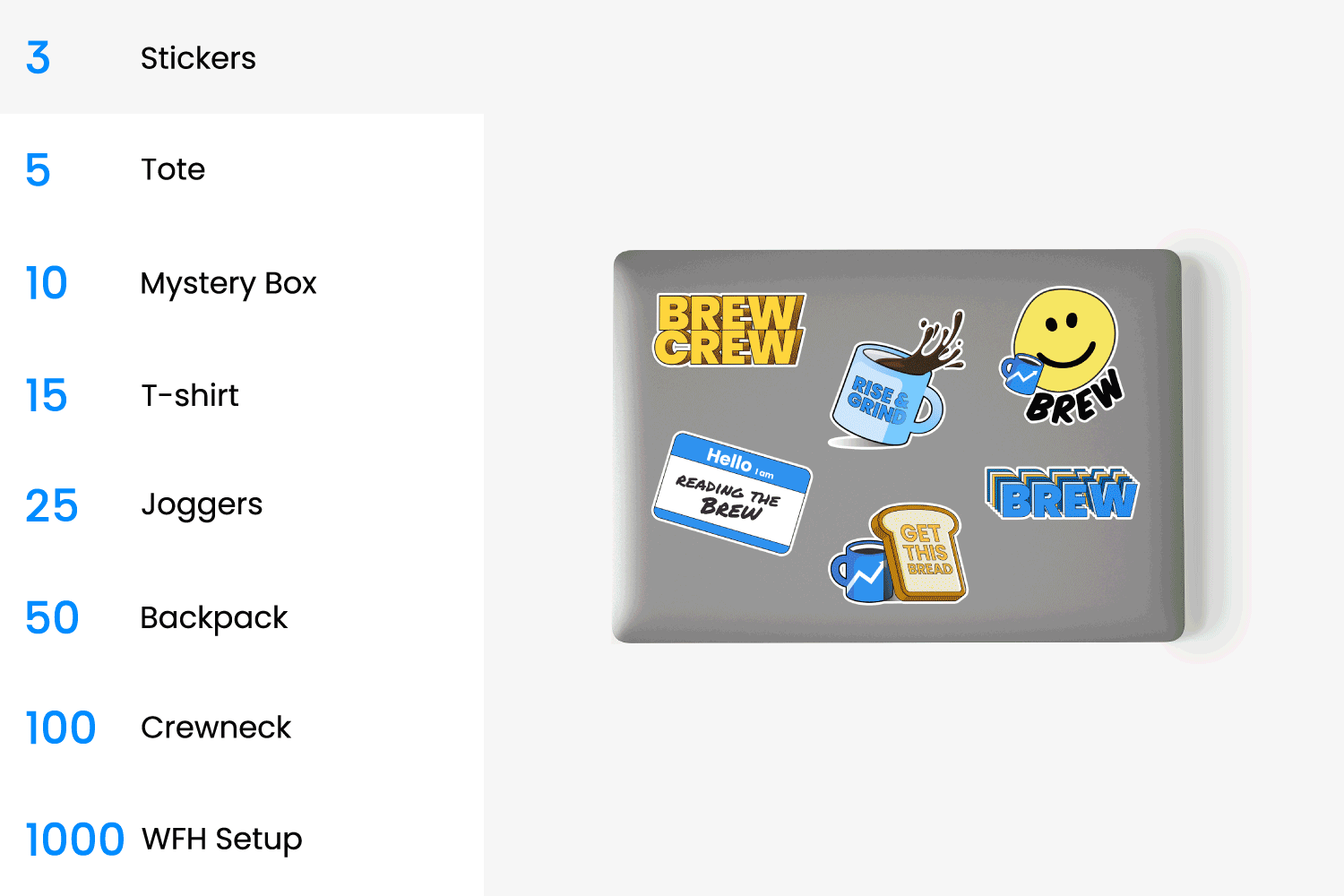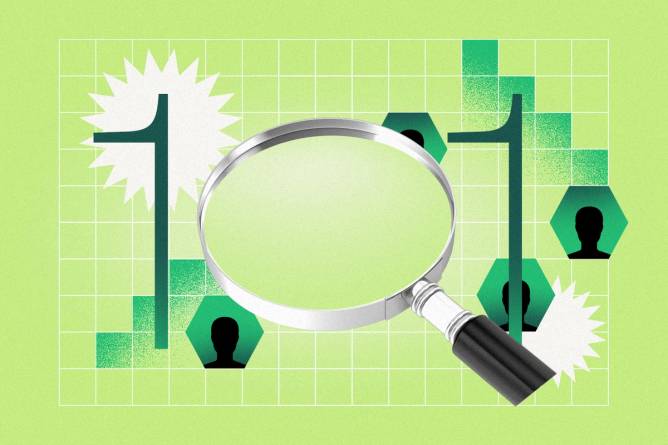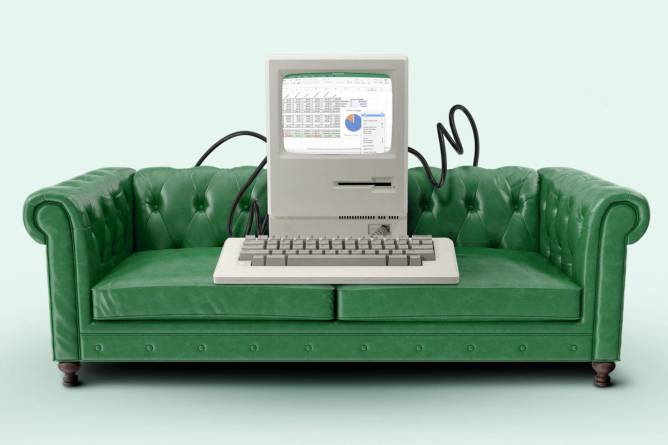How you doin’? The holiday season is nearly here. Are you planning to give employees a much deserved winter break? Let us know by responding to this email!
In today’s edition:
 Let’s make a deal Let’s make a deal
 By the numbers By the numbers
 HR 101 HR 101
—Courtney Vinopal, Amanda Schiavo
|
|
Illustration: Francis Scialabba, Photo: DragonFly/Getty Images
Public support for unions reached its highest level in the US since 1965 in 2022, and dropped four percentage points to 67% this year. Petitions for union representation rose by 53% between fiscal years 2021 and 2022, according to the National Labor Relations Board (NLRB), representing the highest number filed since 2016.
Still, just 10% of wage and salary workers in the US were represented by unions across the public and private sector in 2022, meaning few HR executives likely have experience working with them. Due to an overall decline in US union activity over the past four decades, “HR professionals transitioning to unionized workplaces in the US are more likely to encounter complex union-management dynamics,” according to a SHRM resource published last September.
These union-management dynamics can turn contentious, as seen in high-profile organizing efforts at major companies such as Starbucks and Amazon. In recent years, though, some companies have sought to voluntarily recognize unions, a decision that may open a path to more fruitful negotiations.
The International Documentary Association (IDA), a nonprofit with just over 20 employees that provides grants to documentary filmmakers, is one such organization. After voluntarily recognizing its workers’ union, they reached a contract deal in less than a year, management and organizers told HR Brew.
Keep reading here.—CV
|
|
PRESENTED BY CAREERBUILDER
|
Here’s a revolutionary idea: Pay for what you get. With CareerBuilder, you pay only when their recruiting solutions succeed. So you can find the candidates you’re looking for without breaking the bank.
CareerBuilder’s new plans are built with your budget in mind. No more paying for useless clicks—pay only when real, interested candidates take action in an application, or pay per resume and access more than 41m candidates in CareerBuilder’s database.
The best part? Their plans are flexible and risk free. Increase or decrease your budget at any time with no worries and no long-term commitment.
And now through Dec. 8, get a $50 gift card for booking and attending a meeting with one of CareerBuilder’s pros. Win-win.
Chat with the experts.
|
|
Catherine Mcqueen/Getty Images
The economy did not have as many jobs as expected in October, but HR leaders may have cause to be optimistic.
Nonfarm payrolls increased by 150,000 in October, according to the Bureau of Labor Statistics (BLS), but the rise fell short of the 170,000 analysts were anticipating, CNBC reported. Meanwhile, the unemployment rate rose slightly to 3.9%, despite expectations that it would hold at 3.8%.
The BLS noted that one factor contributing to these numbers was the strike activity across different industries, such as manufacturing. It also revised its numbers from the previous two months, reporting nonfarm payroll employment was down by 62,000 to 165,000 in August and down by 39,000 to 297,000 in September.
But it’s not all doom and gloom. Aaron Terrazas, chief economist at Glassdoor, told HR Brew via PR rep Asia Collier. If HR leaders read between the lines, they’ll see a jobs report that is “remarkably strong,” he wrote.
Keep reading here.—AS
|
|
Francis Scialabba
Welcome to HR 101. Class is now in session. Today’s discussion will focus on the history of HR, where it came from, and how it has evolved.
The history. The earliest version of HR came about in the 1910s as organizations looked to “employment clerks” whose job it was to select daily help, mostly in factories, according to the Society for Human Resource Management (SHRM), with the term “human resource” having been first coined in 1893 by John R. Commons, according to Investopedia. During World War I, demand for HR-like employees jumped.
“A sharp spike in demand for industrial output and the loss of workers to the war effort led to a severe labor shortage,” SHRM wrote. “That forced employers to raise wages, focus on recruiting, and formalize their employment efforts.”
Just 5% of large US employers had a personnel department in 1915, according to SHRM, but that number would grow to 20% by 1920. Following the Great Depression, a series of new laws designed to encourage fair pay and safe working conditions, and negotiations with unions were passed, leading these personnel departments to draft some of the first employee handbooks and hiring strategies.
Keep reading here.—AS
|
|
Francis Scialabba
Today’s top HR reads.
Stat: Women had 65% less saved on average in their 401(k)s than men did in 2022, according to T. Rowe Price. (Employee Benefit News)
Quote: “A caring workplace culture is incredibly valuable for both employers and staff. When people feel safe and supported, they’re much more likely to do a better job, need less time off sick, and feel more positive about the company they work for.”—Sirsha Haldar, a general manager for ADP UK, Ireland, and South Africa, on workplace well-being initiatives (HR Grapevine)
Read: Gen Z is disrupting the workplace with internet speak, openness, and greater transparency. (Axios)
Get real results: Build your dream team (+ stay on budget) with CareerBuilder. Browse risk-free, flexible plans where you pay only for results. Chat with a pro before Dec. 8 to get a $50 gift card.* Data at work: Join HR Brew and Beamery as we discuss the intertwining of quantitative and qualitative data to make informed HR and hiring decisions. Learn how to strike the right balance and register.* *A message from our sponsor.
|
|
Looking to make your next career move? iHireHR has 30k+ handpicked jobs for HR pros, plus easy-to-use tools so you can search and apply from anywhere. Check out these open roles:
Explore even more HR jobs here.
|
|
|
Share HR Brew with your coworkers, acquire free Brew swag, and then make new friends as a result of your fresh Brew swag.
We’re saying we’ll give you free stuff and more friends if you share a link. One link.

Your referral count: 1
Click to Share
Or copy & paste your referral link to others:
hr-brew.com/r/?kid=9ec4d467
|
|
|









